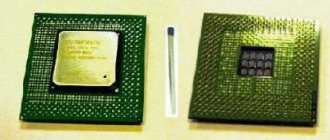- Reports and messages
- Miscellaneous
- Household electrical appliances in the kitchen
Household appliances and electrical appliances in the kitchen are designed to make human work and life easier.
The equipment is classified by size - large and small. In terms of importance - those that are impossible to do without, those that are desirable to have, and those that are quite possible to do without. By purpose and so on. Purposes refer to the preservation of products . These are refrigerators, freezers, wine cabinets and so on. Heat treatment of products. These are gas, electric and induction cookers and panels, ovens, microwave ovens, bread makers, ice cream makers, pancake makers, deep fryers, grills, multicookers and steamers, electric boilers, yogurt makers, toasters, egg cookers, air fryers and much more. Mechanical processing of products. This includes mixers, blenders, bread slicers, graters, food processors, meat grinders and more. Preparation of drinks . Electric kettles, coffee grinders, coffee makers, coffee machines, potters, juicers, juicers.
Currently, progress has stepped forward so much that we cannot imagine our lives without most of these devices. Kitchen electrical appliances have become an integral part of people's daily lives and have made life and daily work around the house, cooking and preserving food much easier for people.
It’s worth thinking about how much these devices help to preserve and save housewives’ time, effort and health. A modern person can afford to devote all the saved resources of time and energy to his family or work. Which raises the social standard of living many levels higher.
After all, twenty to thirty years ago women spent, for example, two hours preparing a certain dish. And now, thanks to modern technology, the same dish can take from twenty minutes to an hour. It all depends on whether the housewife has a set of kitchen electrical appliances.
Report No. 2
It is difficult to imagine a modern kitchen without household appliances. After all, electrical appliances are a person’s faithful friends and assistants in household chores. Some items are indispensable in the household, while others can be done without. Let's look at what tasks kitchen appliances perform.
Task No. 1 – food storage. This function is performed by refrigerators and freezers.
Task No. 2 – cooking and heating food. In this case, a stove, microwave, grill, double boiler, etc. are used.
Task No. 3 – preparing drinks. You can make ready-made drinks using a coffee machine and juicer, and we boil water in an electric kettle.
Task No. 4 - mechanical processing of products (for example, peeling and cutting vegetables). This is where a meat grinder, mixer, blender, vegetable cutter and food processor come to the rescue.
Task No. 5 - various additional functions, for example, washing dishes using a dishwasher, eliminating excess smoke and heat thanks to the hood.
Household appliances in the kitchen can also be divided into large and small. The first type includes large-sized items: refrigerator, stove, microwave, dishwasher, etc. Small electrical appliances are correspondingly small: mixer, electric kettle, coffee grinder, toaster, etc.
Let's talk in more detail about the most important kitchen items.
A stove is a heating device that is used for cooking and heating food. Stoves are divided into electric and gas, but there are also combined ones. Each of these types has a hob, oven and additional compartments (sometimes there is no oven). Gas stoves save energy but require caution to avoid gas explosions.
A refrigerator is a device that maintains a low temperature. Without this electrical appliance it is impossible to keep many foods fresh. Refrigerators are low-temperature (freezers), medium-temperature and two-chamber. Freezers can be separate, but most often they are part of the refrigerator.
Microwave oven (microwave oven) - allows you to quickly heat or cook food. Where did this name come from? When we turn on the device, it starts emitting microwaves. The radiation only affects food, but the dishes remain cold.
The dishwasher is designed for washing and drying dishes. At first glance, this is not the most necessary thing in the household. But the device allows you to significantly save water, and in addition destroys germs on cups and plates.
Any household appliance requires careful and careful handling. Then it will last a very long time and make our life comfortable.
5th grade
Slide captions:
Technology teacher, Municipal Budgetary Educational Institution Secondary School No. 16, Novy Urengoy Interior and planning of the kitchen and dining room
What is interior? Interior is the internal space of a room, which consists of its architectural, artistic and functional design.
Interior requirements Ergonomic requirements - the premises should be comfortable for each family member. Switches should be placed at such a height that everyone can use them, the height of hooks on hangers, shelves in closets should correspond to the height of family members, etc. Sanitary and hygienic requirements - cleanliness, comfortable temperature and air humidity, good lighting of various areas, insulation of the room from external noise. Aesthetic requirements - the interior should be cozy and beautiful. The colors of the walls and furniture should be combined, the decoration and indoor plants should be chosen with taste.
Popular message topics
- Solomon
Solomon was an Israeli king who reigned approximately 965 - 928 BC. Solomon was the third Jewish king, the ruler of Israel at a time when the kingdom was at its peak. by his father - Aquarius constellation
At night, many stars appear in the sky, forming luminous patterns. Some of them burn brighter, while others are dimmer, and being in an urban area it is almost impossible to see them due to high-rise buildings and artificial lighting. - Culture of Ancient China
Chinese culture occupies a significant place among ancient cultures. Like many other cultures, it is unique and original. The Chinese were too rational people, so they directed their culture towards addressing real life and its values.
Rating of kitchen appliance manufacturers
The manufacturer's name often plays a decisive role in the device selection process. The quality and durability of equipment are determined by the brand name. For many decades, German companies have been considered the most reliable manufacturers.
They offer expensive equipment, but due to the quality of assembly and materials, reliability and well-thought-out details, the devices are in stable demand.
Rating of manufacturers that consistently occupy leading positions:
- Bosch and Siemens are corporations that offer the best kitchen appliances. They also produce medical and military equipment, which indicates a high level of technical equipment of the companies. Quality and perfection of work are the distinctive features of the products. The equipment will last for many years and will delight owners with its reliability and aesthetic design.
- AEG is a company specializing in the production of large household appliances for the kitchen. The devices come in a variety of designs; built-in models are available in several series.
- Hansa is a brand that combines high quality and affordable prices, offering options not only in the luxury class.
- Neff is a company that occupies a leading position among premium equipment. The devices are rarely found in stores, since the brand is focused on Europe. The quality and unique design of the products can add status to any interior.
When choosing a manufacturer, be guided not only by the affordable price. After several months or years of operation, cheap equipment will have to be replaced due to breakdowns, ultimately spending a lot more money.
Types of lamps technology grade 7
To consciously shape the light climate, it is necessary to remember that visual comfort is influenced not only by the power and amount of light, but also by the nature of the distribution of light fluxes, which depends on the placement and type of reflective parts of the lamps. These factors determine the different types of lighting.
According to the nature of the luminous flux distribution, lighting can be:
•direct - the luminous flux falls on the illuminated area directly from the source. Direct light flux creates high local illumination and allows maximum use of the light source power. In this case, clear shadows are formed that contrast with the illuminated surface;
•reflected - the light flux falls on the illuminated surface, reflecting from some surface. Reflected light is softer and does not produce clearly defined shadow boundaries.
A favorable light climate is possible only with a combination of these types of lighting.
All household lighting devices are designed for one type of lighting or another. Direct or predominantly direct lighting is used for local lighting. It is advisable to use lamps of reflected or predominantly reflected light for general lighting.
Lighting can be general -
to illuminate the entire room, or
local
- to illuminate part of the room (any functional area, work plane).
In a small room it is possible to combine general and local lighting. For example, in a bathroom, a lamp located near the mirror can illuminate the mirror (toilet) area and the room as a whole. Sometimes you can limit yourself to only general lighting, for example in communication spaces: stairs, corridors or utility rooms. In all other rooms, it is most rational to use a combined lighting system, otherwise a psychologically unfavorable environment will be created.
The combined lighting system involves, along with general lighting, local lighting of a separate zone and is called zonal interior lighting. Zonal lighting solves two problems: practical and aesthetic (creates expressiveness of the light environment). By varying the lighting of individual zones and the room as a whole in different combinations, you can achieve a wide variety of lighting effects.
There are three types of local lighting:
•worker - his task, as a predominantly local person, is to create visual comfort in the work area by bringing the light source closer to the work space. Work lighting requires a high level of illumination and uniform distribution of light flux on the work surface. The most appropriate here is a directional or predominantly directional type of lighting;
•orienting - there are, for example, special orienting lamps: night lights that create a minimum level of illumination;
•decorative - represents a light accent that emphasizes the overall aesthetic design. These can be colored decorative lamps, which act as decorative light in the dark - a spot of color, or directional light lamps, emphasizing one or another element of the interior - illumination of curtains, objects of decorative and applied art, etc.
The most important practical task of creating a light climate is the selection and placement of lamps, which can be general, local, combined, decorative, orienting lighting. Lamps also perform a decorative function.
A lamp is a device that combines a light source (lamp) and lighting fixtures (lampshade, diffuser), which redistributes the light of the lamp in space and transforms its properties.
The design of various types of lighting devices, ensuring the placement of light sources at a certain point in space, enhances the luminous flux due to special reflectors, and eliminates the blinding brightness of light sources due to various diffusers. Modern lighting devices provide the ability to change the direction of the light flux thanks to various moving structural elements.
Due to the fact that direct light creates a significant contrast in brightness, and with reflected light the power of the light source is irrationally used, combined lamps with predominantly direct or predominantly reflected lighting are most often developed. This is achieved by a complex, specially designed form of the optical part, the use of matte translucent lampshades, diffusers, and reflectors. The materials used for them are plastics, glass, and fabrics.
The most rational ones from the point of view of maximum use of power are luminaires with a light and shiny inner part of the reflectors.
In Fig. 3.5 shows the various types of lamps used in hotels. Ceiling lamps are used in rooms of low height; they come with one or more light bulbs placed behind glass or plastic diffusers. Pendant lamps most often have diffusers and reflectors.
General lighting fixtures are usually installed in the center of the ceiling. In extended rooms with a large area, it is possible to use two ceiling lamps. Such lamps should provide uniform illumination of the entire space. For this purpose, traditional multi-arm and compact chandeliers with several light elements on one rod, crystal chandeliers, etc. are used. In bedrooms, combined wall lamps such as sconces can be used for general lighting.
Local lighting fixtures are very diverse. They can be floor, table, wall, or hanging. These lamps must provide a directional luminous flux, designed to provide high illumination of a small part of the space.
Rice. 3.5. Types of lamps:
1
- ceiling;
2—
tabletop;
3—
wall-mounted;
4—
floor;
5— built-in; 6—
suspended; 7—attached
Working lamps for local lighting require a movable structure.
Combined lighting luminaires combine the functions of local and general lighting due to the large and specially designed optical part.
The decorative properties of light are sometimes used in special lamps that do not have utilitarian functions. Decorative lamps used as decoration elements are made using colored glass and plastics, ceramics, and various types of diffusers, which can produce interesting lighting effects. But such lamps cannot be used as sources of general and work light. Exposition lighting fixtures, used to illuminate individual interior elements (curtains, paintings, furnishings), are manufactured in the form of compact devices that produce a narrow luminous flux.
Lamps are sometimes grouped into a single system - a lighting installation.
These include:
•installations where each lamp is used as an independent element, for example pendant lamps, shades, chandeliers, sconces;
•installations assembled from groups of lamps: light strips, panels;
•installations in which individual lamps cannot be distinguished, for example, light cornices, illuminated ceilings and other devices where the lamp is hidden from the eye of the observer.
The luminous elements of a lighting installation are divided into three types: point, linear and surface.
Lighting installations with spotlights can be used independently or in combination with other lamps. A spotlight with a mirror incandescent lamp can give depending on. designs a clearly visible sheaf of light and a clearly defined circle on the illuminated surface or a spot of light with blurred edges.
Installations with built-in lamps and shades provide relatively uniform illumination of the surface. If necessary, lamps can be assembled in lines, blocked into light panels, increasing illumination.
Rules for choosing large household appliances
For a device to become an indispensable assistant in the kitchen, you need to choose it carefully. Professionals recommend considering the following recommendations when purchasing:
- The noise level should not exceed 45 dB. Most kitchen appliances operate in the range from 35 to 45 dB, and devices with a level from 25 to 34 dB are considered silent.
- For modern technology, class A energy efficiency
- When choosing a refrigerator, you need to decide on its size. This determines how the appliance fits into the kitchen space. For small kitchens, narrow (45-55 cm) but tall models are purchased. The large kitchen allows you to place a refrigerator in the form of a cabinet with two chambers: a refrigerator and a freezer.
- To avoid worrying about ice blocks on the walls of the refrigerator, choose a model with a no frost function. And for frequent storage of chilled meat and prepared dishes - a unit with a freshness zone. It maintains a zero temperature, allowing you to place warm foods in the refrigerator.
- When choosing a hob, you should choose the type: gas, electric or induction. An induction cooker reduces cooking time, but the panel is less impact-resistant and requires careful handling. Then you need to decide on the number of burners: in a small kitchen you can install a model with two or three burners.
- When choosing an oven, housewives give preference to an electric one. It is more functional because it has useful functions: convection, defrosting, grilling, 3D heating. The oven can be dependent on the hob or independent. A self-contained oven allows you to install it at a convenient level.
- The hood is selected according to the size of the kitchen. If the area is large, the device must be more powerful. For a small kitchen, a hanging recirculation hood is suitable. It is compact, so it will save space for an additional wall cabinet.
- A dishwasher is not a necessity, but it makes life a lot easier. In addition to time, the device saves water consumption and copes with washing greasy dishes. Professionals advise buying a model with a capacity two or three times the minimum required. A modern dishwasher must support at least five operating modes.
Additional
There are other electrical appliances that are optional and can be done without in daily kitchen work. But their presence will be an additional advantage, as it will save time on preparing a particular dish or performing any process.
Useful and functional items are considered:
- Multicooker. This is a multifunctional kitchen appliance designed for preparing a wide range of dishes. Using this technique, you can steam, stew, fry, boil, bake, and reheat various dishes. Not every kitchen has a multicooker, but nowadays its popularity is increasingly increasing. The main reason is significant time savings and no need to control the cooking process.
- Juicer. Like a multicooker, a juicer is not a must-have item for the kitchen, especially if you have a food processor with a similar function. However, people leading a healthy lifestyle and lovers of freshly squeezed fruit and vegetable juices simply cannot do without this device.
Before purchasing a kitchen appliance, you should analyze its functionality and consider how useful it will be in everyday work. Home appliance stores offer a wide range of products that can make cooking much easier. It is impossible to live without some appliances in the kitchen, while some will be considered a useful addition, but not a necessary item. Therefore, before purchasing, you need to decide on a list of equipment so as not to purchase something that will not be in demand later.









